Dr. Oetker Stories
Dr. Oetker as a pioneer of advertising movies
As early as the beginning of the 20th century, the Dr. Oetker brand has always been present in public spaces through advertising. From 1908 onwards, an independent marketing department was set up at Dr. Oetker. That made the company one of the first in Germany. Logically, Dr. Oetker is also one of the pioneers of commercials in cinema and television!
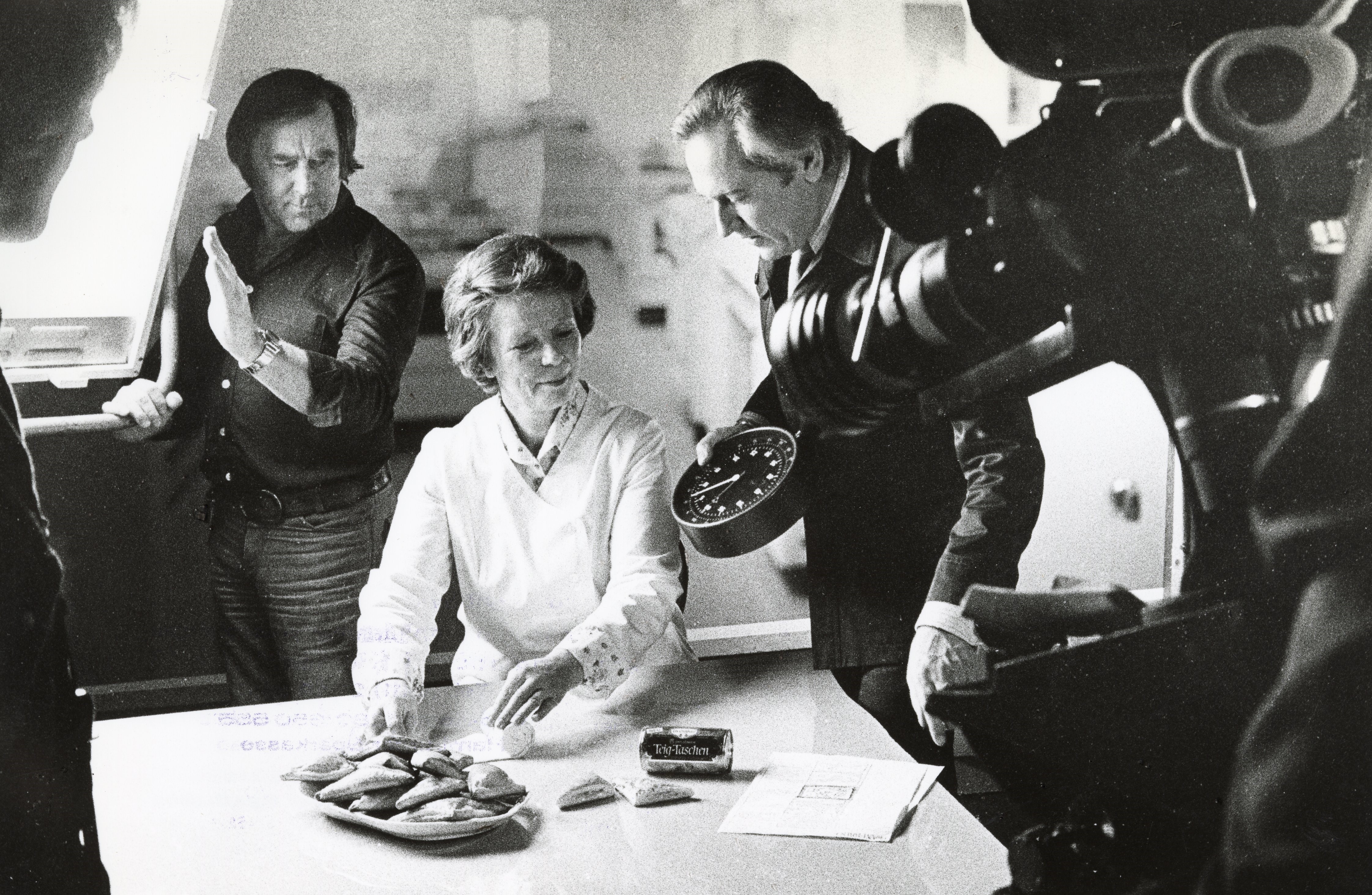
16.6.2023 • History
The company's founder, Dr. August Oetker, understood early the opportunities offered by target group-oriented advertising. Innovative communication channels were very important to him and his success proved him right. His heirs were also convinced of this. Advertising with moving images began at Dr. Oetker in the interbellum period. In 1926 the first film for Dr. Oetker was produced, and in 1927 the first commercial with a plot was released in cinema. And in 1956, the company's first TV commercial flickered across the nation's screens. For decades, the Dr. Oetker testimonials "Frau Renate", Vico Torriani and Marie-Louise Haase were icons of German television.
First advertising and the development of the brand
A brand company is perceived primarily through its advertising. At the very beginning, the founder himself made Dr. Oetker a well known local company through word of mouth and the delivery of free gifts. He was one of the first in Germany to rely on content marketing, because the products were accompanied by the appropriate recipes and he published recipe booklets and later also books which prominently featured the company´s products. These measures were accompanied by advertising campaigns and advertising posters in public spaces. Around 1900, the Dr. Oetker brand was already familiar in most parts of Germany and with the "Hellkopf", which is still used today, a strong and unmistakable brand logo was introduced in 1899.
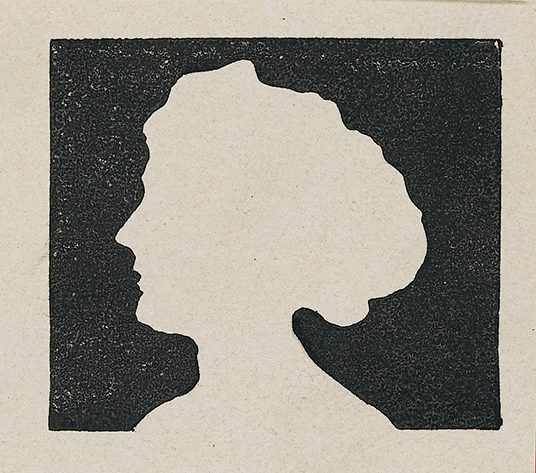
The Hellkopf logo, introduced in 1899. Simply unmistakable!
In 1908, Dr. Oetker set up an independent and genuine advertising department. This made the company one of the first in Germany. However, commercials were still something completely unknown.
When the pictures learned to walk
In the mid-1920s, the economy in Germany recovered after the Great War and catastrophic inflation. After years of crisis, Dr. Oetker was once again able to implement elaborate marketing ideas. For the first time, the movies came into play. The direct customer approach was always important to those responsible at Dr. Oetker, and sales representatives demonstrated the use of the products to the astonished audience at events. Factory tours had also become popular. So the idea was born to show people the products on film and to give them an insight into the production. A separate film department was set up for this purpose and ten cars were equipped with projectors. These drove all over the country. There were so-called factory movies, practically a tour of the factory captured on film. The first film of this kind was titled "On the Way to the Land of Milk and Honey" and was shown for the first time in 1926.

A Dr. Oetker advertising vehicle at a public film screening in 1932. The screen was attached directly to the rear of the trailer.
In 1927, the first Dr. Oetker advertising film with a fictional plot was produced. The title: "A Savior in Need". Still shot as a silent film, an everyday situation was recreated in which a young woman had to feed surprise visitors. Dr. Oetker products were presented as a quick and successful solution to this logistical and culinary challenge – and in an entertaining way. The audience was thrilled, and other commercials quickly followed, also as cartoons. In the 1930s, the sound film also prevailed at Dr. Oetker and had become a central advertising medium. Where else but in the cinema did advertisers have the full attention of the audience?
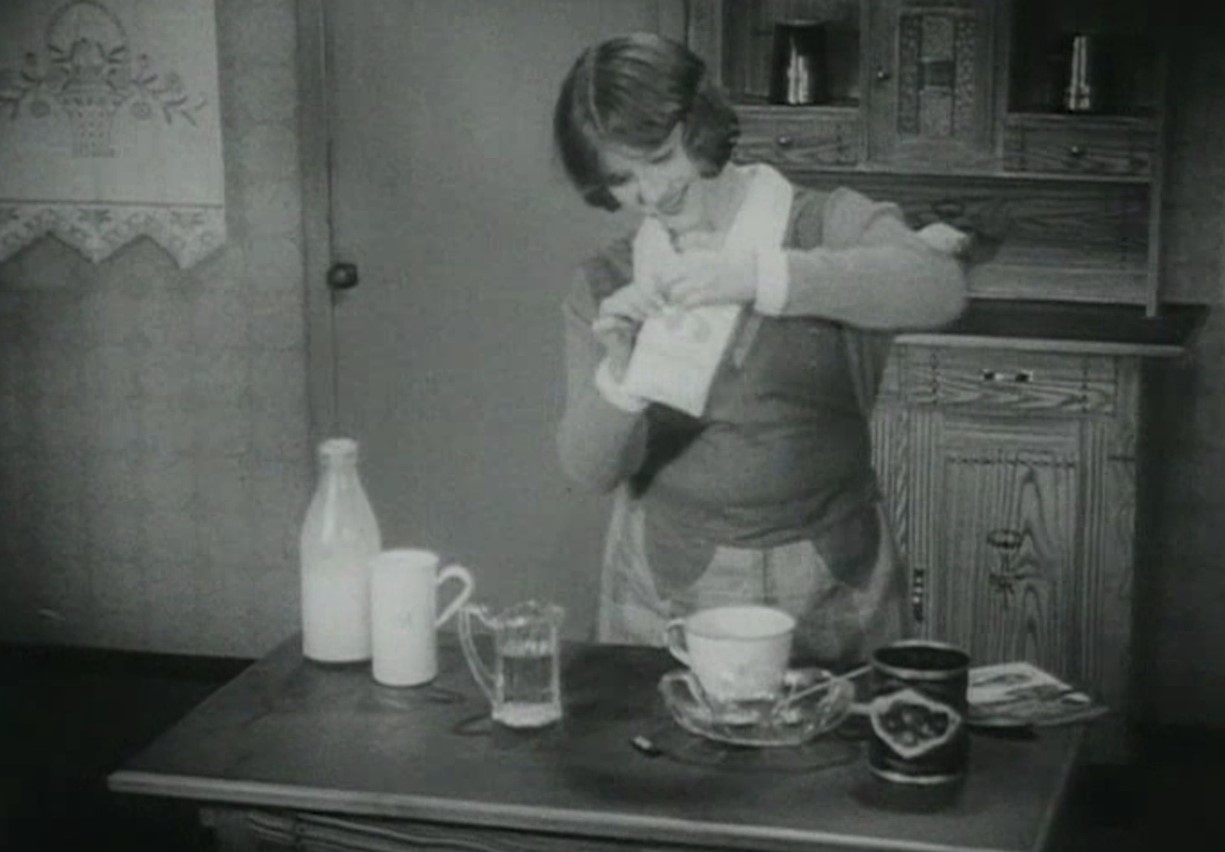
The first Dr. Oetker commercial shown in cinemas. It's title: "A Savior in Need". It was produced in 1927.

A scene from the 1932 cartoon The Magic Kitchen.
Ms. Renate – advertising icon of the German economic miracle
The immediate post-war period was initially marked by deprivation. If cinema advertising took place at all, Dr. Oetker relied on simple colored slides. In 1948, things went uphill again in West Germany as a result of the currency reform. People could afford something and the range of goods increased. The economic miracle began. Consumer goods manufacturers benefited enormously from this. In 1954, Dr. Oetker presented the dynamic working young mother "Frau Renate", a new fictional advertising character.

In 1954, a series of commercials for the cinema was made, which showed the character Ms. Renate for the first time. She was played by the actress Hannelore Cremer.
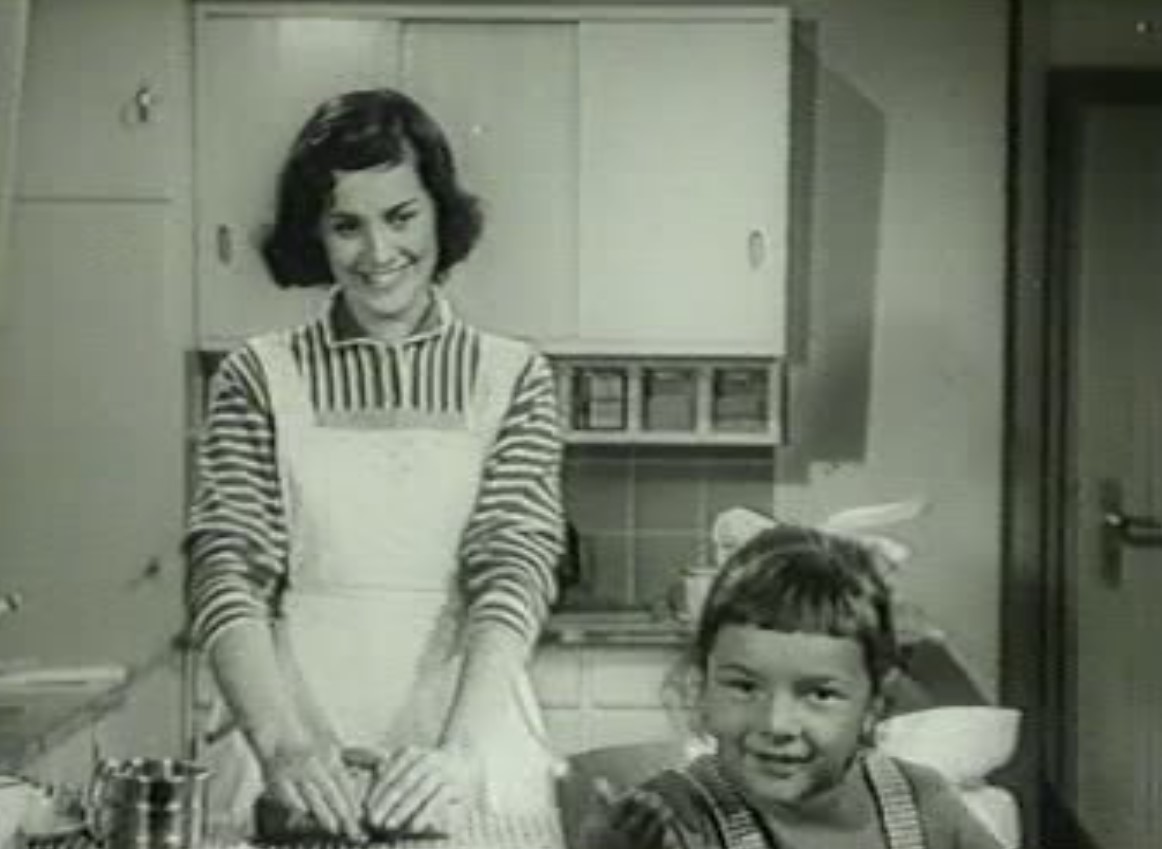
The first TV commercial by Dr. Oetker produced in 1956. Ms. Renate baked a Christmas stollen in this one.
She was played by the actress Hannelore Cremer. In colorful and lively films, she presented the advantages of the Dr. Oetker product range and promoted the in-house recipes. It was also she who appeared in the very first Dr. Oetker television commercial in 1956 and baked a Christmas stollen in it during the Christmas season.
Until the 1960s, Ms. Renate was the face of the brand in film and TV, as well as her voice in radio commercials. She could also be seen in advertisements, on advertising posters and on the covers of recipe booklets. In favour of TV advertising, however, other forms of marketing, such as direct marketing to customers through product demonstrations and exhibitions, have been withdrawn. The home television easily reached many more people than was ever possible before.
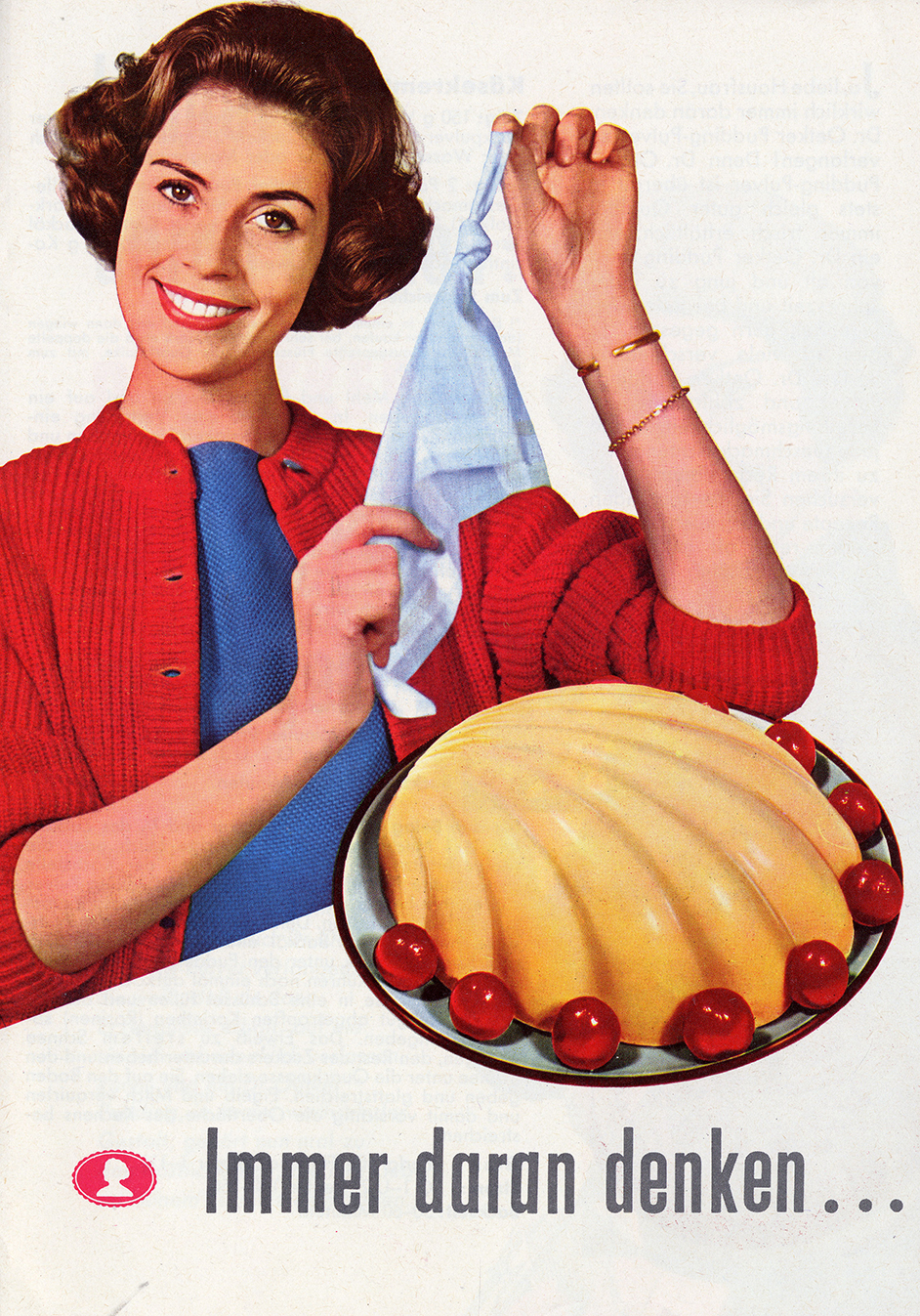
On covers of recipe booklets, in paper advertisements or radio show - Ms. Renate was used everywhere as testimonial for Dr. Oetker.
Celebrities in Dr. Oetker commercials
From the mid-1960s, the Swiss entertainer Vico Torriani was hired for television advertising. In his commercials, he sang songs with his unmistakable voice, always matching the product presented. As an international star, his commercials have also been produced abroad. His spots were also available in French or Italian.
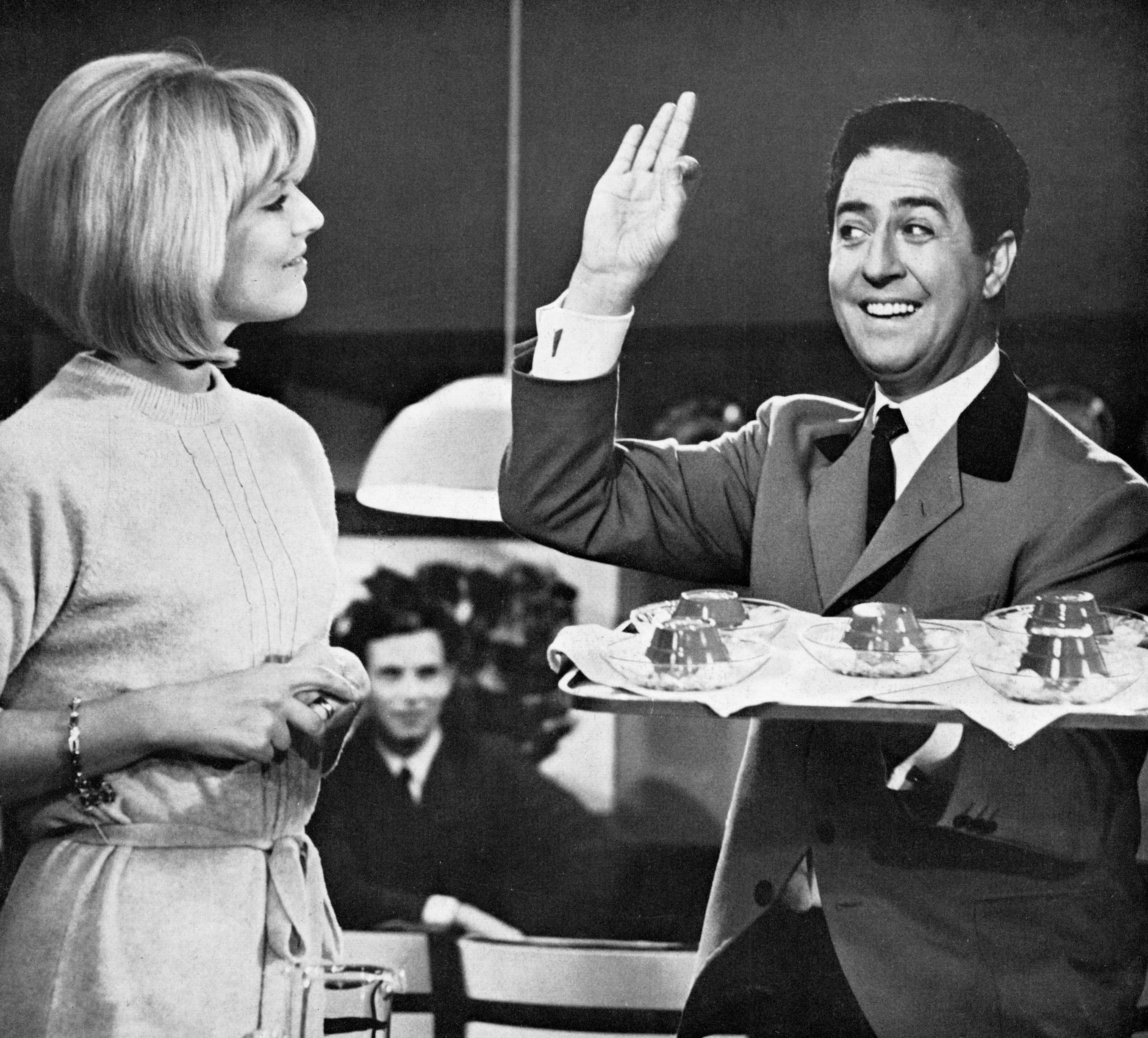
Legendary Swiss entertainer Vico Torriani was the face and voice of the brand on TV in the 1960s.
In 1976, Dr. Oetker enlisted the support of Hollywood. The actor William Conrad, who was very popular at the time and became known in Germany primarily with television series such as Cannon or Jake and McCabe, shot several humorous commercials for the frozen food sector. At the time, the ratings for the series Cannon were over 57% among the advertising-relevant target group, making Conrad an ideal advertising face. In addition to the TV commercials, cinema advertising was also placed. In the commercials, frozen products such as gourmet soups, Asian pans, vegetable classics and, of course, pizza were presented in Conrad's private kitchen in Los Angeles, which he prepared and ate with relish. The professional actor from Hollywood also became a fan of the brand behind the camera. Conrad came into contact with Dr. Oetker during a recording for the Rudi Carrell Show.
A professional as testimonial – Marie-Louise Haase
In the 1970s, another firm testimonial for Dr. Oetker flickered across German television screens. Marie-Louise Haase advertised new Dr. Oetker products with competent objectivity and showed the audience how easy they were to use. And the competence was not played. Ms. Haase actually lead the Dr. Oetker test kitchen for a long time and the white coat was therefore not a prop.

Filming at Studio Hamburg in 1976. This spot was to promote chilled dough for dumplings to fill yourself. The director went through all the steps for the next scene with Marie-Louise Haase.
At the end of a spot, viewers were also asked to write to the Dr. Oetker test kitchen with questions and suggestions. Over the years, Marie-Louise has also established herself as an icon of German advertising television.
Of frozen pizza and operas
In the mid-1980s, the design and appearance of the Dr. Oetker brand was modernized. This was also reflected in the advertising. The visual language in all media has been more standardized and the lifestyle character of the products, such as frozen pizza, has been particularly emphasized. The commercial for Ristorante Pizza, which has been available since 1985, is legendary. A couple has a romantic rendezvous and enjoys Ristorante pizza. In the background, the song La donna è mobile from Giuseppe Verdi's opera Rigoletto is playing. To this day, this piece of music is used for Ristorante and has become the signature tune of the range.
In the 90s and 2000s, of course, commercials continued to be produced for a wide variety of product ranges. To this day, Dr. Oetker is present on television. And of course, in recent years, the brand with the Hellkopf has been on the move on more and more digital channels. In this way, Dr. Oetker is moving with the times in order to reach its target groups even better.
For more information please contact:
Claus-Carsten Andresen
Media Spokesperson History & Archive